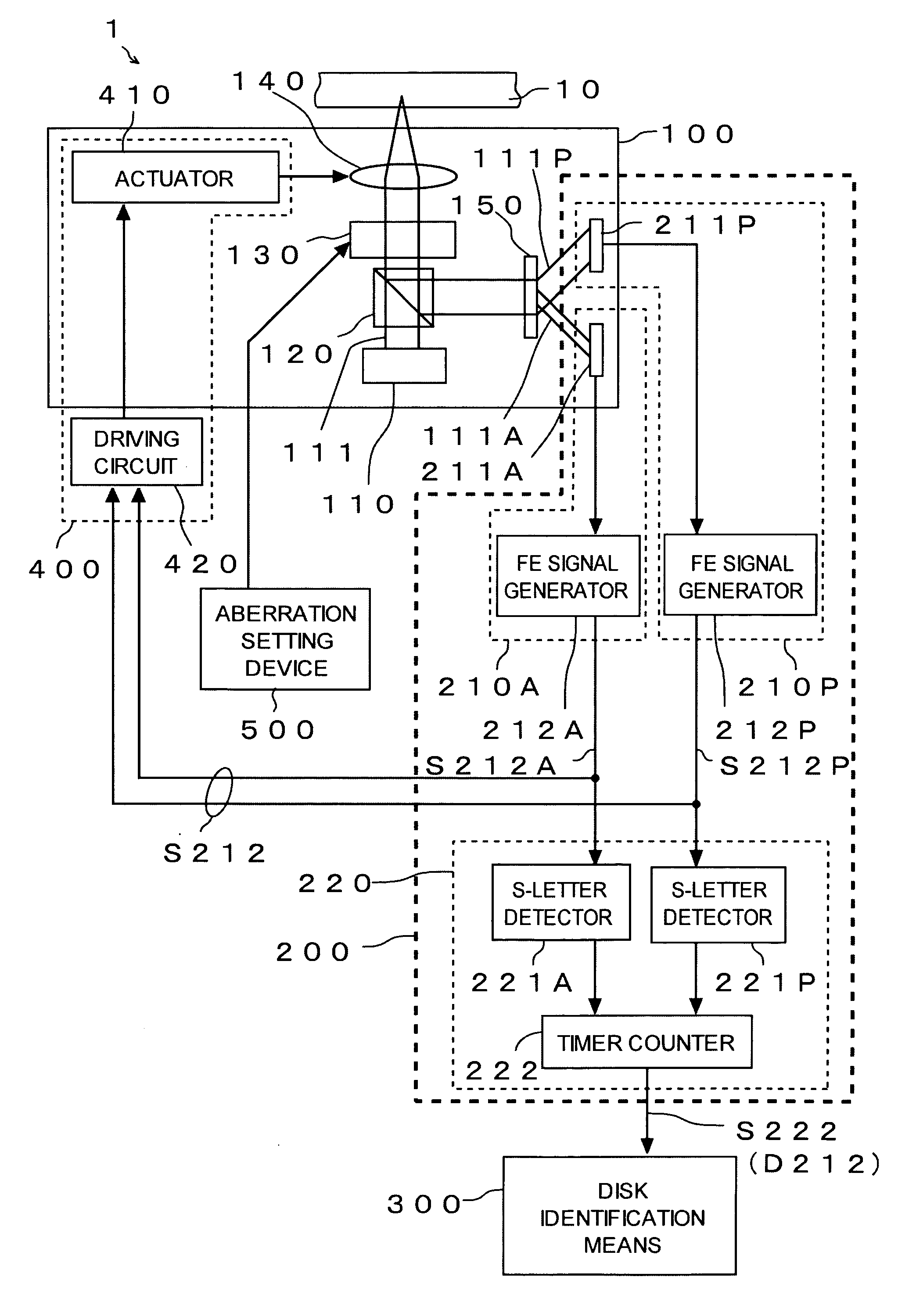Optical disc device
a technology of optical discs and optical discs, applied in the field of optical disc identification techniques, can solve the problems of difficult to receive the influence of noise, and achieve the effects of reducing processing load, reducing noise, and improving operability
- Summary
- Abstract
- Description
- Claims
- Application Information
AI Technical Summary
Benefits of technology
Problems solved by technology
Method used
Image
Examples
Embodiment Construction
[0040] First of all, in FIG. 1, there is shown a schematic view for describing the principles of the present invention. A basic structure of an optical disc 10 such as CD (Compact Disc), DVD (Digital Versatile Disc), or BD (Blu-ray Disc), as shown in FIG. 1, includes a substrate 11, an information recording surface 12 on the substrate 11, and a protective layer 13 on the information recording surface 12. Reproduction / recording from or onto the optical disc 10 is performed by illuminating the information recording surface 12 with light 111 through an objective lens 140 from the protective layer 13 side.
[0041] When in reproduction / recording from or onto the optical disc 10, it is necessary to condense the light 111 to coincide the focus with the information recording surface 12 at which time it is further necessary to suppress or eliminate a so-called spherical aberration. The reason therefor is that the spherical aberration renders servo control such as for focusing unstable and, as...
PUM
| Property | Measurement | Unit |
|---|---|---|
| wavelengths | aaaaa | aaaaa |
| wavelengths | aaaaa | aaaaa |
| wavelengths | aaaaa | aaaaa |
Abstract
Description
Claims
Application Information
 Login to View More
Login to View More - R&D
- Intellectual Property
- Life Sciences
- Materials
- Tech Scout
- Unparalleled Data Quality
- Higher Quality Content
- 60% Fewer Hallucinations
Browse by: Latest US Patents, China's latest patents, Technical Efficacy Thesaurus, Application Domain, Technology Topic, Popular Technical Reports.
© 2025 PatSnap. All rights reserved.Legal|Privacy policy|Modern Slavery Act Transparency Statement|Sitemap|About US| Contact US: help@patsnap.com



